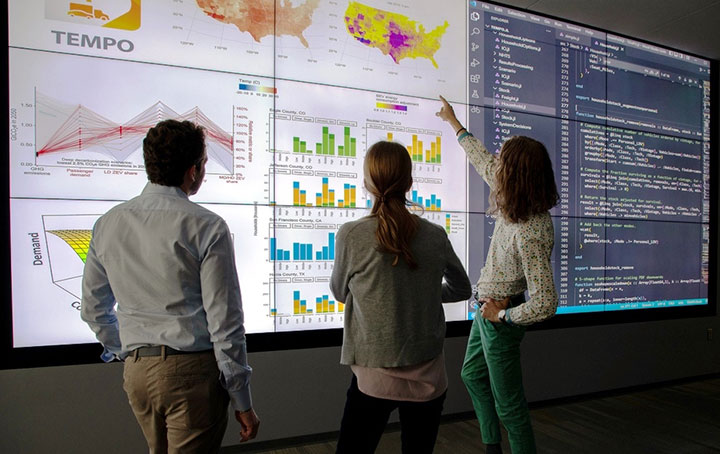Vehicle Systems Analysis
NLR's vehicle systems analysis examines how technologies, costs, consumer preferences, and travel behavior influence the adoption and performance of both conventional and advanced vehicles.

Researchers use advanced modeling tools to analyze the impacts of emerging technologies and business models.
Researchers assess factors such as battery prices, vehicle prices, fuel costs, driving range, and total cost of ownership to understand their impact on consumer choices, market trends, and vehicle operations. These analyses estimate energy use, efficiency, and life cycle costs under real-world conditions. Because standard tests often miss the effects of “off-cycle” technologies, researchers use advanced modeling tools to evaluate their performance. This work supports NLR's broader transportation and mobility research by providing data-driven insights across individual vehicles, fleets, and transportation networks.
Research and Development
Researchers examine how factors such as battery prices, fuel costs, and total cost of ownership influence the adoption of conventional and advanced vehicle technologies.
Using the ADOPT: Automotive Deployment Options Projection Tool, a vehicle consumer choice and stock model, researchers estimate how vehicle price, fuel cost, acceleration, range, and availability influence sales and energy use.
ADOPT incorporates the FASTSim: Future Automotive Systems Technology Simulator, which compares vehicle powertrains and estimates how technology improvements affect vehicle cost, performance, efficiency, and battery life.
Researchers also use the T3CO: Transportation Technology Total Cost of Ownership tool to analyze full life cycle costs for advanced commercial vehicles and evaluate costs and savings associated with switching from traditional diesel operations to electric.
Achieving maximum mobility with minimum energy relies on understanding the energy costs associated with various decisions. Using the RouteE: Route Energy Prediction Model, researchers calculate the energy and time savings potential of routing options and analyze opportunities for large-scale fuel savings.
By combining vehicle simulation with real-world operation—while accounting for anticipated traffic congestion, traffic speed, road type, number of lanes, road grade, and turns—RouteE estimates energy use and time across proposed routes. These analyses support enhanced choice and more efficient travel options for individual vehicles, fleets, and transportation networks.
NLR analyzes key factors affecting ride-hailing and mobility-service-provider fleets—including charging infrastructure needs and vehicle use under shared, automated, and electrified scenarios—to reveal how fleet operations influence energy use, vehicle usage patterns, and service.
Using NLR's HIVE: Highly Integrated Vehicle Ecosystem Framework, researchers simulate fleet operations, comparing outcomes across scenarios that vary with respect to location, vehicle types, charging and fueling station networks, fleet operational behaviors, and economic factors.
Emerging transportation technologies, shifting mode choices, and innovative business models—such as those introduced by vehicle electrification, ride-hailing services, and micro-mobility solutions—are reshaping transportation energy demand.
Researchers use NLR's TEMPO: Transportation Energy and Mobility Pathway Options Model to investigate long-term strategies for meeting key transportation and energy goals. As a transportation demand model, TEMPO evaluates opportunities for current and emerging fuels, technologies, and business models across various transportation sectors and segments, supporting integrated analyses.
To assure the accuracy of their vehicle systems analyses, researchers tap into a wealth of real-world travel behavior data from the Transportation Secure Data Center along with commercial fleet vehicle operating data from the Fleet DNA clearinghouse.
Browse Publications
NLR publishes journal articles, conference papers, and reports about vehicle systems analysis.
Contact
Contact us to learn more about our vehicle systems analysis capabilities or to discuss your partnership interests.
Share
Last Updated Dec. 6, 2025
